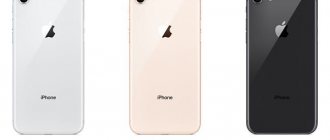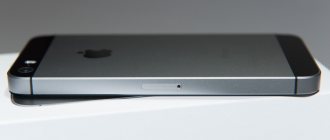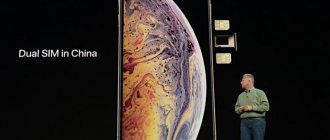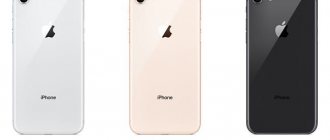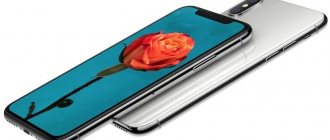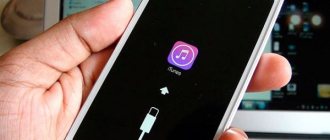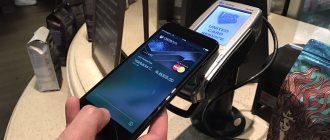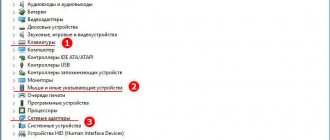Today, iPhone buyers abroad who want to purchase a fresh or refurbished iPhone SE in China are faced with a burning question - which model to choose for use in Russia:
- iPhone SE A1723
- or A1662?
Let's figure it out.
As you know from previous articles on this blog, in which I talked about how to choose a seller and buy an iPhone on Aliexpress without any trouble, the same model of Apple phones is available in different modifications for markets in different countries. No, they are identical in appearance, but the filling, or rather the cellular communication module, differs due to the difference in network standards in different parts of the world. It is precisely these alphanumeric values, in our case with the iPhone SE A1723 and A1662, that indicate these different models. Finding the number is easy - it is engraved on the back cover of the smartphone.
How to find out what model your iPhone SE is
Turn your smartphone over and look carefully at its back cover. The model number will be indicated immediately after the Assembled in China inscription - this is what interests us.
There are exactly three options: A1662, A1723 and A1724 . There is nothing else in the iPhone SE model line, otherwise you bought an iPhone 5s.
How do iPhone models differ:
- The A1662 model is aimed at cellular networks of the American market.
- Model A1723 is produced for the international market.
- Model A1724 is produced for the international market and China.
All characteristics, appearance, arrangement of elements and power of the two iPhone SEs with different versions of the models are completely identical. The only difference is the specificity of network frequency range support.
Let's go to the official Apple website and see the specification of the supported LTE band for a specific model.
Now let’s figure out which 3GPP number Russian operators use.
- Yota – Band 7;
- Megafon (all Russia) – Band 7;
- Megafon (Moscow and region) – Band 38;
- MTS (all Russia) – Band 7;
- MTS (Moscow and region) – Band 38;
- Beeline – Band 7;
- Tele2 – Band 7;
In addition, operators can use 3GPP with the number Band 20, which is included in the specification of the American model iPhone SE A1662 . But LTE operation will be limited exclusively to certain areas of the country.
As a result: to avoid problems with LTE in Russia and a number of European countries, choose models A1723 and A1724 . The A1662 model will operate exclusively in 3G mode and only in some areas using the LTE protocol.
Detailed technical specifications
Make and model
Make and model of the device, and alternative names (if any).
| Brand Device manufacturer company. | Apple |
| Model Device name. | iPhone SE |
| Alternative names Other model names, if available. Sometimes the model is called differently, depending on the country or because of popular nicknames. | A1662 A1723 A1724 |
Design
Appearance of the device including dimensions, weight, volume, colors and materials.
| Width The horizontal side of the device when used in standard orientation. | 58.6 mm (millimeters) |
| Height The vertical side of the device when used in standard orientation. | 123.8 mm (millimeters) |
| Thickness The cross-sectional size of the device. | 7.6 mm (millimeters) |
| Weight How much does the device weigh excluding the case, SIM and memory cards and other additional elements. | 113 g (grams) |
| Volume Approximate value calculated using the formula: length times width times height. | 55.14 cm³ (cubic centimeters) |
| Colors What colors is the device available in? | Gray Silver Golden Rose gold |
| Housing materials What materials is the body made of? | Aluminium alloy |
System on a Chip (SoC)
A system on a chip, a single-chip system (System on a Chip, SoC) is when several systems performing different device functions are connected on one chip.
| System on a Chip (SoC) A single-chip system that contains components such as a processor, graphics accelerator, memory units, communication interfaces, etc., as well as software for the operation of the system. | Apple A9 APL0898 |
Central processing unit (CPU)
| Central processing unit (CPU) The main component of the device is responsible for calculations and data processing. | Apple Twister |
| Technical process What technological process is used to make the chip? The smaller the process technology, the better - the chips consume less power and generate less heat. | 14 nm (nanometers) |
| Processor size Processor capacity is a parameter that indicates how many bits of data a processor register processes in 1 clock cycle. This is usually 32 or 64 bits. | 64 bit |
| Instruction Set Architecture Instruction set architecture (ISA) is a programmable part of the microprocessor core used by software to control the operation of the processor. | ARMv8-A |
| Number of processor cores The processor can be either single-core or multi-core. The performance of the processor depends on the number of cores (threads). The more cores working simultaneously, the higher the power consumption, so in mobile devices all cores are used only under high load. | 2 |
| CPU clock speed Clock speed is the number of operations per second that a processor or its core can achieve. The higher the frequency, the higher the overall performance of the device, but performance also depends on the processor architecture and the number of cores. | 1840 MHz (megahertz) |
Graphics Processing Unit (GPU)
| Graphics Processing Unit (GPU) The graphics processing unit (GPU) is used to process and display graphics - 3D effects, games, interfaces and other visual elements. Due to the pipeline architecture, the GPU is many times more efficient in graphics processing than the processor. | PowerVR GT7600 |
| Number of GPU cores Similar to a processor, a GPU can have one core or several. The number of cores (threads) determines the performance and amount of information processed. The more cores, the better. | 6 |
Random access memory (RAM)
| Amount of random access memory (RAM) RAM (Random Access Memory, RAM, RAM) is temporary memory (works only while the device is running), which stores data and code for the operational operation of programs and applications. The more RAM, the more programs you can run simultaneously without loss of performance (there will be fewer “brakes”). | 2 GB (gigabytes) |
| Type of random access memory (RAM) Information about the type of RAM used by the device. | LPDDR4—- M9 motion coprocessor |
Built-in memory
Most mobile devices have built-in Flash memory, which is used as a storage for system data, the operating system, as well as user data - photos, videos, recordings and much more.
| Built-in memory capacity The higher the amount of built-in memory, the more games, programs, music, videos and your other files will fit in the device, especially the amount of memory is important when the device does not support memory cards. | 16 GB (gigabytes) 32 GB (gigabytes) 64 GB (gigabytes) 128 GB (gigabytes) |
Operating system
A mobile operating system (OS) is pre-installed software with a well-thought-out interface for user control of device functions.
| Operating system (OS) The operating system installed by default by the device manufacturer, as well as its version. | iOS 9.3 |
Battery
To operate autonomously, a mobile device requires a battery that powers all its components.
| Battery capacity The main characteristic of a battery is its maximum capacity, that is, the charge it can store. Capacity is measured in mAh (mAh, milliamp-hour). The higher the capacity, the longer the mobile device can work. | 1642 mAh (milliamp-hours) |
| Battery type Many types of batteries have been used in portable devices, but NiCd (nickel-cadmium), NiMH (nickel-metal hydride), and even more so SLA (lead-acid) batteries are already considered obsolete. Instead, modern mobile devices use Li-Ion (lithium-ion) and Li-Pol, Li-Poly (lithium-polymer) batteries. | Li-polymer |
| Call duration on 3G network (WCDMA, UMTS, CDMA2000) About how long a fully charged battery will be discharged during a call on third generation networks. Approximate time because it is influenced by various factors, including ambient temperature. | 14 h (hours) 840 min (minutes) 0.6 days |
| Waiting time on 3G network (WCDMA, UMTS, CDMA2000) About how long a fully charged battery will be discharged if the mobile device is in standby mode and connected to third generation networks. | 240 h (hours) 14400 min (minutes) 10 days |
Screen
The screen (display) is the main element for displaying graphic information.
| Technology The technology used to make the screen. There are many types of display manufacturing with their pros and cons. | IPS |
| Diagonal The screen diagonal of a device is measured in inches (inch, in or simply ″), and 1″ is equal to 2.54 cm. | 4 in (inches) 101.6 mm (millimeters) 10.16 cm (centimeters) |
| Width Approximate screen width | 49.87 mm (millimeters) 4.99 cm (centimeters) |
| Height Approximate screen height | 88.52 mm (millimeters) 8.85 cm (centimeters) |
| Aspect Ratio Aspect ratio is the ratio of the shorter side of the screen, which is considered to be 1, to the longer side, which is denoted by a decimal fraction indicating the ratio to the short side. | 1.775:1 |
| Screen resolution Screen resolution is the number of horizontal pixels (dots) multiplied by the number of vertical pixels. The higher the resolution, the more detailed the image will be. | 640 x 1136 pixels |
| Pixel Density The number of pixels per inch or PPI (pixels per inch) indicates the density of pixels per 1 inch (2.54 cm) of the screen. The higher the PPI, the sharper the image, and the less visible or even invisible “squares and dots” (pixels). | 326 ppi (pixels per inch) 128 ppcm (pixels per centimeter) |
| Color depth Color depth means how many bits are used in 1 pixel to display color (bits per pixel). | 24 bit 16777216 colors |
| Screen area Approximate usable area occupied by the screen on the front of the device. The higher the percentage, the narrower the frames around the display or the smaller the “chin with bangs.” | 61.05% (percent) |
| Touch screen A touch screen is a device that usually covers the display and is a touch input tool. In fact, in mobile devices, the touchscreen is a replacement for the keyboard and mouse. | Yes |
| Touch screen type There are many types of touch screens, with their pros and cons. Mobile devices often use capacitive touchscreens, but technology does not stand still and new types of sensors are appearing. | Capacitive |
| Multi-touch Touch screen support for two or more touches. For example, zooming photos with two fingers. | Yes |
| Impact-resistant protective glass of the display The screen and touchscreen of a mobile device are usually covered with protective tempered glass (sometimes plastic or film is used instead of glass) to protect the display from impacts and scratches. Many companies are engaged in the production of such protection, but the most famous are Corning - Gorilla Glass and Asahi - Dragontrail. | Yes |
| Display Contrast Ratio Contrast ratio is the ratio of display brightness in the white area to the black area. For example, 1000:1 means that white is 1000 times brighter than black. The higher the ratio, the deeper the blacks and the overall better image. | 800:1 |
| Brightness Screen brightness is measured in candelas per square meter (cd/m2, cd/m2). The higher this indicator, the brighter the screen luminosity will be and the less it will be affected by ambient lighting. Comfortable brightness for videos and games is considered to be 300 cd/m2 or more. | 500 cd/m² |
Main camera
The main camera, usually built into the rear of the device, is designed for creating photo and video content.
| Photomatrix model An image sensor (matrix) is a light-sensitive sensor that converts an optical image into electrical signals that the device can subsequently process. | Sony IMX315 Exmor RS |
| Maximum image resolution This is the maximum number of pixels (dots) horizontally and vertically. The higher the resolution, the more detailed the image will be. Resolution can also be indicated in megapixels - this is the total number of pixels that can be in the image, calculated by the formula: vertical pixels multiplied by the number of horizontal pixels and divide the resulting amount by 1 million. | 4032 x 3024 pixels 12.19 MP (megapixels) |
| Matrix type There are two main types of photomatrix, CCD (Charge-Coupled Device) and CMOS (Complimentary Metal-Oxide Semiconductor). Mobile devices mainly use a CMOS matrix - it requires less space, has low power consumption and heating. Recently, new types of sensors have begun to appear, for example PureCel from OmniVision. | CMOS (complementary metal-oxide semiconductor) |
| Matrix size The larger the physical dimensions of the sensor, the larger pixels can be installed there or the greater their number, increasing the luminous flux and exposure. That is, the larger the size, the better. | 4.8 x 3.6 mm (millimeters) 0.24 in (inches) |
| Matrix pixel size Pixel size is one of the matrix parameters that determines what size pixels are used in the matrix. The larger the size, the better - less noise and a larger light-sensitive area. | 1.19 µm (micrometers) 0.00119 mm (millimeters) |
| Crop factor The crop factor is the ratio between the dimensions of a small format 35 mm matrix (36 x 24mm) and the size of the device matrix. That is, how much is our matrix smaller than the 35 mm matrix. Almost all cameras have smaller matrices, and the indicator itself is more of a reference value. | 7.21 |
| Focal length Focal length is the distance from the center of the lens to the image sensor. | 4.02 mm (millimeters) 29 mm (millimeters) *(35 mm / full frame) |
| Diaphragm Aperture (f-number, f) is used to control the light flux passing through the lens. The aperture is indicated by a fraction, and the smaller the fractional number, the higher the aperture passing through the lens. The more light that passes through the lens, the better overall, less noise in your photos and better night photography. | f/2.2 |
| Flash type Most mobile devices are equipped with light-emitting diode (LED) flashes, but there are also xenon flashes. As a flash, xenon is better - it is more powerful, but LED is more versatile (can work as a flashlight) and consumes less electricity. | Double LED |
| Maximum video resolution This is the maximum number of pixels (dots) horizontally and vertically. The higher the resolution, the more detailed the image will be. | 3840 x 2160 pixels 8.29 MP (megapixels) |
| FPS video recording at maximum resolution FPS (Frames per Second, frame rate) is the number of frames that changes in 1 second. The higher the number of frames per second, the smoother the image will be. In this case, we mean the number of frames that the camera can achieve at its maximum resolution; the lower the resolution, the higher the FPS can be. | 30 fps (frames per second) |
| Presence of flash Incorporating a flash into a mobile device allows you to take pictures in low light conditions. Creates the necessary lighting and compensates for the lack of natural light. | Yes |
| Digital zoom With digital zoom (zoom, enlargement), the subject is brought closer due to software image algorithms. The higher the magnification with digital zoom, the worse the image quality (noise, blur) will be compared to a non-zoomed one. | Yes |
| Number of lenses in the lens This is the number of optical elements (lenses) that are contained in the optical circuit of a camera lens. | 5 |
| Focus on face Function of auto-detection of living objects and autofocus on their face or head. | Yes |
| Panoramic shooting mode Panoramic photography is a series of frames where each subsequent frame is a continuation of the previous one; at the end of the shooting, all frames are stitched together at the software level to create a panoramic photograph. Frames can be shot both vertically and horizontally, and their width can be up to 360 degrees. This type of shooting is used when the camera's viewing angle is not enough to capture the entire scene. | Yes |
| HDR shooting mode HDR photography takes a quick series of shots with highlights, midtones, and shadows, then combines them into a single frame with high dynamic range. | Yes |
| Electronic (digital) image stabilizer EIS (Electronic Image Stabilizer - digital image stabilization) is performed using software algorithms and is needed to reduce blurring when the camera shakes. | Yes |
| Additional Information Additional information about the functions and characteristics of cameras. | Autofocus Continuous shooting Geo-tagging Touch focusing Exposure compensation Self-timer |
Front-camera
The front camera of a mobile device (selfie camera, rear camera) is a camera on the front part, which is usually used for video communication, recognition of gestures or faces, and selfie photographs.
| Matrix model A matrix (sensor) is a light-sensitive element that converts an optical image into electrical signals, which the device can subsequently process. Typically, the front camera uses a simpler matrix than the main one, excluding smartphones designed for selfies. | OmniVision OV2E0BNN |
| Face unlock This is a new way to unlock your phone using facial recognition | Yes |
| Matrix type There are not many types of matrices, the main ones are CCD, PureCel and the most popular in mobile devices due to low power consumption and compact size - CMOS. | CMOS (complementary metal-oxide semiconductor) |
| Diaphragm An aperture (or aperture) is essentially an adjustable baffle to control the amount of light passing through the lens. The aperture is indicated by a fraction, and the smaller it is, the more light passes through the lens, which has a positive effect on photographs - there will be less noise and better night photography. While the main cameras also come with an adjustable aperture, most front cameras have a fixed aperture. | f/2.4 |
| Video resolution This is the maximum resolution the camera can record video at. The higher the resolution, the better. | 1280 x 720 pixels 0.92 MP (megapixels) |
| Frame rate (FPS) of video shooting This is talking about FPS at maximum video resolution; at lower resolutions, the frame rate per second can be higher. FPS determines the smoothness of the video, as well as the ability to speed up or slow down it. | 30 fps (frames per second) —- 1.2 MP Retina flash HDR Exposure compensation Self-timer |
SIM card
Subscriber Identification Module (SIM) used in mobile devices to identify subscribers in cellular networks.
| Type, size of SIM card A regular (mini SIM) card has dimensions of 25x15 mm. Micro SIM - 15x12 mm. Nano SIM - 12.3x8.8 mm. The sizes of SIM cards are different and not interchangeable. There is also an eSIM (virtual, electronic SIM card), it is built into the device and does not take up space. | Nano-SIM (4FF - fourth form factor, since 2012, 12.30 x 8.80 x 0.67 mm) |
| Number of SIM cards How many SIM cards does the device support? | 1 |
Mobile networks
This is a system in which communication and data transfer is carried out between subscribers, the location of one or more of which changes. This section lists the supported mobile communication standards and frequencies.
| GSM GSM (Global System for Mobile Communications) is a standard for digital mobile cellular communications of the second generation 2G with time and frequency division of channels. GSM came to replace analog cellular communications 1G (first generation). | GSM 850 MHz GSM 900 MHz GSM 1800 MHz GSM 1900 MHz |
| CDMA CDMA (Code Division Multiple Access) - this mobile communication standard can be classified as a 2.5G network (generation), unlike 2G, CDMA has higher speech quality, higher cellular network capacity and increased data transfer speed. | CDMA 800 MHz CDMA 1700/2100 MHz CDMA 1900 MHz |
| TD-SCDMA TD-SCDMA (Time Division Synchronous Code Division Multiple Access) is a third generation (3G) mobile communications standard used in China. | TD-SCDMA 1900 MHz (A1723) TD-SCDMA 2000 MHz (A1723) |
| UMTS UMTS (Universal Mobile Telecommunications System), also called 3GSM, is a third generation (3G) mobile communications standard based on the WCDMA air interface. | UMTS 850 MHz UMTS 900 MHz UMTS 1700/2100 MHz UMTS 1900 MHz UMTS 2100 MHz |
| LTE LTE (Long-Term Evolution, often referred to as 4G LTE) is a standard for wireless high-speed data transmission, which, although it belongs to fourth generation networks (4G), is essentially a transitional stage from 3G to 4G, greatly accelerating data transfer speeds. The standard has an improved version, LTE Advanced (LTE-A), which can already be considered a full-fledged 4th generation network. | LTE 700 MHz Class 17 LTE 800 MHz LTE 850 MHz LTE 900 MHz LTE 1800 MHz LTE 1900 MHz LTE 2100 MHz LTE 700 MHz Class 13 (A1662) LTE 2600 MHz (A1723) LTE-TDD 1900 MHz (B39) (A1723) LTE - TDD 2300 MHz (B40) (A1723) LTE-TDD 2500 MHz (B41) (A1723) LTE-TDD 2600 MHz (B38) (A1723) LTE AWS (B4) LTE 700 MHz (B12) LTE 800 MHz (B18) LTE 800 MHz (B19) LTE 800 MHz (B20) LTE 1900+ MHz (B25) LTE 800 MHz (B26) LTE 800 MHz SMR (B27) LTE 700 MHz APT (B28) (A1723) LTE 700 MHz de (B29) (A1662) LTE 2300 MHz (B30) |
| CDMA2000 CDMA2000 (Code Division Multiple Access) is a third generation (3G) mobile communications standard that is based on CDMA to improve it. Compared to CDMA One, it is distinguished by network reliability, data transfer speed and high voice quality. | 1xEV-DO Rev. A |
Mobile network data standards
What data transfer standards in cellular networks are supported by the device, as well as their speed.
| Data transmission technologies Technologies for receiving and transmitting data, as well as their maximum speed. | UMTS (384 kbit/s) EDGE GPRS HSPA+ (HSUPA 5.76 Mbit/s, HSDPA 42 Mbit/s) LTE Cat 6 (51.0 Mbit/s, 301.5 Mbit/s) EV-DO Rev. A (1.8 Mbit/s, 3.1 Mbit/s) TD-SCDMA TD-HSDPA |
WiFi
Wi-Fi (Wireless Fidelity) is a technology for wireless data transmission over a local network among devices based on IEEE 802.11 standards.
| Wi-Fi Hot-Spot A hotspot is a Wi-Fi access point. In a mobile device, Hot-Spot turns the smartphone into a Wi-Fi access point, essentially turning it into a router capable of distributing the Internet. | Yes |
| Dual-band Wi-Fi DUAL-BAND (dual-band) Wi-Fi is the ability of a device to immediately receive or broadcast wireless signals in two frequency bands 2.4 and 5 GHz. 5GHz is a less congested frequency, due to which the connection will be of better quality. | Yes |
| WiFi MIMO MIMO is a spatial encoding method for a signal that increases the bandwidth of the channel in which data is transmitted and received by systems from multiple antennas. It is usually denoted as number (number of transmitters) x number (number of antennas). For example, 2x2 MIMO means that a WI-FI system consists of 2 transmitters and 2 receive antennas, while 1x1 is a traditional single antenna design. The more systems, the higher the throughput. | Yes |
| WiFi Supported WIFI wireless network standards. | 802.11a (IEEE 802.11a-1999) 802.11b (IEEE 802.11b-1999) 802.11g (IEEE 802.11g-2003) 802.11n (IEEE 802.11n-2009) 802.11n 5GHz 802.11ac (IEEE 802.11ac) —- |
Bluetooth
Bluetooth (BT, bluetooth (z), “blue tooth”) is a short-range wireless network (up to 10, sometimes 100 meters) operating on radio waves to transmit voice and data between devices.
| Bluetooth version Bluetooth technology is actively developing and, since 1998, has been constantly updating versions of the standard. Each subsequent version introduces one or several improvements in data exchange speed, range, facilitates pairing, reduces power consumption, or introduces some new protocols and operating profiles. The higher the Bluetooth version, the better. The technology is also backward compatible, for example, if your mobile device has version 5.0, then it will work with accessories version 4.2 and lower, but the improvements introduced in version 5.0 will not work; they will work only if both the device and accessories are version 5. | 4.2 |
| Bluetooth Low Energy (BLE) Bluetooth LE is a low energy BT protocol specification. | Yes |
| A2DP profile The A2DP Bluetooth profile is designed to transmit a high-quality two-channel stereo signal via Bluetooth to wireless headphones, speakers and other acoustics. | Yes |
Sensors
Modern devices have many sensors that help in measurements, trigger functions, and make using the device more pleasant.
| Light sensor The light sensor reacts to the light level and is able to adjust the screen brightness automatically based on this. This is necessary to reduce power consumption and ease of use of the device. | Yes |
| Proximity sensor The proximity sensor reacts to the proximity of the mobile device to some object. For example, the sensor is used when talking on the phone to turn off the screen, which saves energy and prevents you from pressing buttons with your ear or cheek. | Yes |
| Gyroscope Gyroscope (gyroscope, gyro sensor) is a sensor for orientation in space that tracks the angle of inclination of even a stationary device along three coordinate axes. The sensor is mainly used in conjunction with an accelerometer in games and applications. | Yes |
| Accelerometer An accelerometer is a sensor that measures apparent acceleration, that is, it determines the position and distance at which a mobile device moves in space. Based on the data from this sensor, the screen orientation change, pedometer, control using tilts and gestures in games and applications, etc. work. | Yes |
| Fingerprint's scanner The scanner is responsible for authorization using a previously saved fingerprint, as a result of which the device is unlocked, payment is made, some action is confirmed - just put your finger on the scanner. Scanners can be either built into the body or built into a button or screen. | Yes |
| Digital compass This is software that displays data from a magnetic sensor or GPS in the form of a compass on the screen of a mobile device. If there are no sensors or GPS, then the digital compass will not work. | Yes |
| Additional sensors |
Audio
Audio - characteristics and capabilities of a mobile device in terms of sound.
| Music speaker There are two types of speakers in mobile devices - auditory and musical. The auditory speaker (speaker) is used for conversation, the music speaker (buzzer) is used to play music and sounds. | Loudspeaker Earphone —- HAC (M3/T4) — Hearing Aid Compatibility |
Radio
The radio in a mobile device can be built-in by the manufacturer (catch local radio channels, no internet required, often works only with headphones (as an antenna), but not always) or installed as an online application (requires internet, but more channels and often better quality) .
| Built-in radio Is a radio tuner integrated into the mobile device? | No |
Navigation and location
The location is determined by satellite navigation systems that track the device's autonomous geospatial location at multiple points. The most common satellite navigation systems are GPS, GLONASS, and the Chinese BeiDou.
| GPS GPS (Global Positioning System) is a global satellite navigation system that can determine the position of a mobile device, build routes and find the desired object on the map with an accuracy of several meters. | Yes |
| A-GPS A-GPS (Assisted GPS) is an assistive technology that will help you quickly find the location of your cellular device without waiting for satellite data, which is especially important in indoors and cities. Location is determined in various ways, for example, Wi-Fi access points, mobile towers, bluetooth and others. | Yes |
| GLONASS GLONASS is a Russian Global Navigation Satellite System, which is similar to GPS and works in tandem with it, increasing the accuracy and speed of navigation. | Yes |
| Additional navigation systems | Wi-Fi Cell ID |
USB connector
USB (Universal Serial Bus) is a serial interface for connecting peripherals to computers, smartphones, laptops and much more. The interface allows you to exchange data and power a peripheral device with energy, as well as connect several peripheral devices to one USB connector at once.
| USB standard The higher the standard, the faster the throughput, or more precisely the data exchange rate. With version 3.0 of the standard, the current was increased to 0.9A, eliminating the need for additional power for some devices. | 2.0 |
| USB Mass Storage Connecting a mobile device via USB as a data storage device. That is, when you enable this mode, your device can be used as a flash drive. | Yes |
| Additional characteristics Additional features of the USB connector, for example, OTG, whether the connection is supported, peripheral devices and additional memory. | Charging via USB Own cable/interface |
Headphone jack
A TRS headphone jack (or jack) is a common standard of connectors used for transmitting audio signals. By diameter there are jack (6.5 mm), mini-jack (3.5 mm) and micro-jack (2.5 mm). In mobile devices, the 3.5mm jack was considered the most popular and widespread, but recently they began to be removed, leaving only USB connectors, through which headphones are connected with a corresponding plug or using adapters.
| 3.5mm headphone jack Does the device have a 3.5 mm audio jack? | Yes |
Connection and synchronization
Options for synchronizing your mobile device and connecting it to other devices.
| NFC NFC (Near field communication, near contactless communication) is a technology for contactless communication between devices over a short distance. Widely used for contactless payment, in the form of a travel card or pass, and is also used for reading and interacting with NFC tags and for exchanging data between devices. | Yes |
| Connection, synchronization Types of synchronization and connection technologies supported by the device. | Computer sync OTA sync Tethering TV-Out UMA VoLTE |
Browser
A browser is a browser program for viewing sites and their content on the Internet. Through the browser, you can open websites, search for information, download necessary files, watch streaming videos, play browser games, etc.
| Technologies Markup and programming languages supported by the built-in (standard) browser. For mobile devices, you can install additional browser applications if the standard one does not suit you. | HTML HTML5 CSS 3 |
Audio file formats/codecs
Mobile devices support many audio file formats, as well as codecs for playing them.
| Default formats The formats that the mobile device supports out of the box are indicated. But if the device does not support the format you need, then you can try adding support for it. Sometimes support depends on the technical characteristics of the device (“hardware”) and nothing can be added here, but often the ability to process a particular audio format depends on the software part. You can install another audio player or codec set separately. | AAC (Advanced Audio Coding) eAAC+ / aacPlus v2 / HE-AAC v2 M4A (MPEG-4 Audio, .m4a) MP3 (MPEG-2 Audio Layer II, .mp3) WAV (Waveform Audio File Format, .wav, .wave) Apple Lossless AAX+ AAX |
Video file formats/codecs
Video file formats that the device supports and is capable of decoding and playing.
| Default formats Video file formats that the device is capable of playing with standard firmware and a standard (built-in) set of programs. Not all formats are supported by default, but you can install a third-party video player and/or set of codecs. | 3GPP (3rd Generation Partnership Project, .3gp) H.263 H.264 / MPEG-4 Part 10 / AVC video H.265 / MPEG-H Part 2 / HEVC QuickTime (.mov, .qt) MPEG-4 |
Why did this happen
Immediately after the start of sales, a flood of “gray iPhone SE” poured into the domestic market. A more reasonable price and the opportunity to receive a smartphone almost immediately after the official start of sales resulted in problems with LTE for users.
And everything is very simple - the reduced price is explained by direct deliveries of smartphones aimed exclusively at American networks. Of course, uninterrupted operation of LTE in Russia is impossible in such models (iPhone SE A1662).
By model number
First, we’ll find out how to check the iPhone model without turning it on. Each iPhone belongs to a specific family of Apple smartphones, which differ from each other in year of manufacture, memory capacity, color and the presence or absence of functional components for different regions of sale. The hidden capabilities of the iPhone are hidden in every version of the smartphone.
The model code is indicated on the back cover of the smartphone and on the box after the word “Model”. By typing these characters into any search engine, you can find the model name. A list of codes that are found in Russia is given below when describing the differences between each of the iPhones.
Dimensions and weight
The dimensions and weight of the 5s and SE are the same - 123.8 x 58.6 x 7.6 mm, but the weight... the new Apple smartphone has one gram more :). 113 versus 112. An “extra” gram in real life, of course, is more of a joke than a disadvantage - hardly anyone will seriously notice it.
Video review:
Cameras
The iPhone SE received a 12 megapixel iSight camera with an f/2.2 aperture. For comparison, the iPhone 5s was equipped with a photo module of only 8 megapixels (the aperture is the same). The old iPhone seriously lags behind the new one in terms of functionality - unlike the SE, 5s
- does not record video in 4K resolution or at 240 frames per second (slow motion);
- does not take panoramic photos in resolutions up to 63 megapixels;
- Does not take Live Photos.
But the front camera of FaceTime on both smartphones is equally “antediluvian” - only 1.2 megapixels. And if in the case of the iPhone 5s this can somehow be explained, then the iPhone SE has nothing to cover - it is obvious that Apple (apparently in pursuit of a low price) saved money here. True, even on this “front” the SE has one advantage - Apple engineers equipped it with the Retina Flash function (when taking a selfie in poor lighting conditions, the screen acts as a flash).
CPU
iPhone SE received the Apple A9 chip, which is also installed in the iPhone 6s and 6s Plus. According to Apple itself, it is 2 times more productive than the A7 chip installed in the iPhone 5s, and 3 times faster than its predecessor in processing graphics. The M9 coprocessor is also much more powerful than the M7 - thanks to interaction with sensors (compass, gyroscope and accelerometer), it allows you to collect more fitness data (steps, kilometers, etc.). iPhone SE's Hey Siri feature works without being connected to a power source.
ON THE TOPIC: Comparison of iPhone 7 / 7 Plus, iPhone 6s / 6s Plus and iPhone SE (table).
iPhone 12 Pro Max
Year of release: 2022 Memory capacity: 128, 256, 512 GB Colors: silver, graphite, gold, Pacific blue Model numbers: A2342 (USA), A2410 (Canada, Japan), A2412 (China mainland, Hong Kong, Macau), A2411 (other countries and regions)
Details: iPhone 12 Pro Max features a 6.7-inch full-screen Super Retina XDR display1. There's a textured frosted glass on the back and a stainless steel strip around the frame. The side button is located on the right side of the device. On the back of the body there are three 12-megapixel cameras: ultra-wide-angle, wide-angle and telephoto. There is also a LiDAR scanner on the back of the case. On the back of the case there is a Dual-LED True Tone LED flash, and on the left side is a SIM card tray for fourth form factor (4FF) nano-SIM cards. The IMEI number is engraved on the SIM card tray.
See iPhone 12 Pro Max specs.
